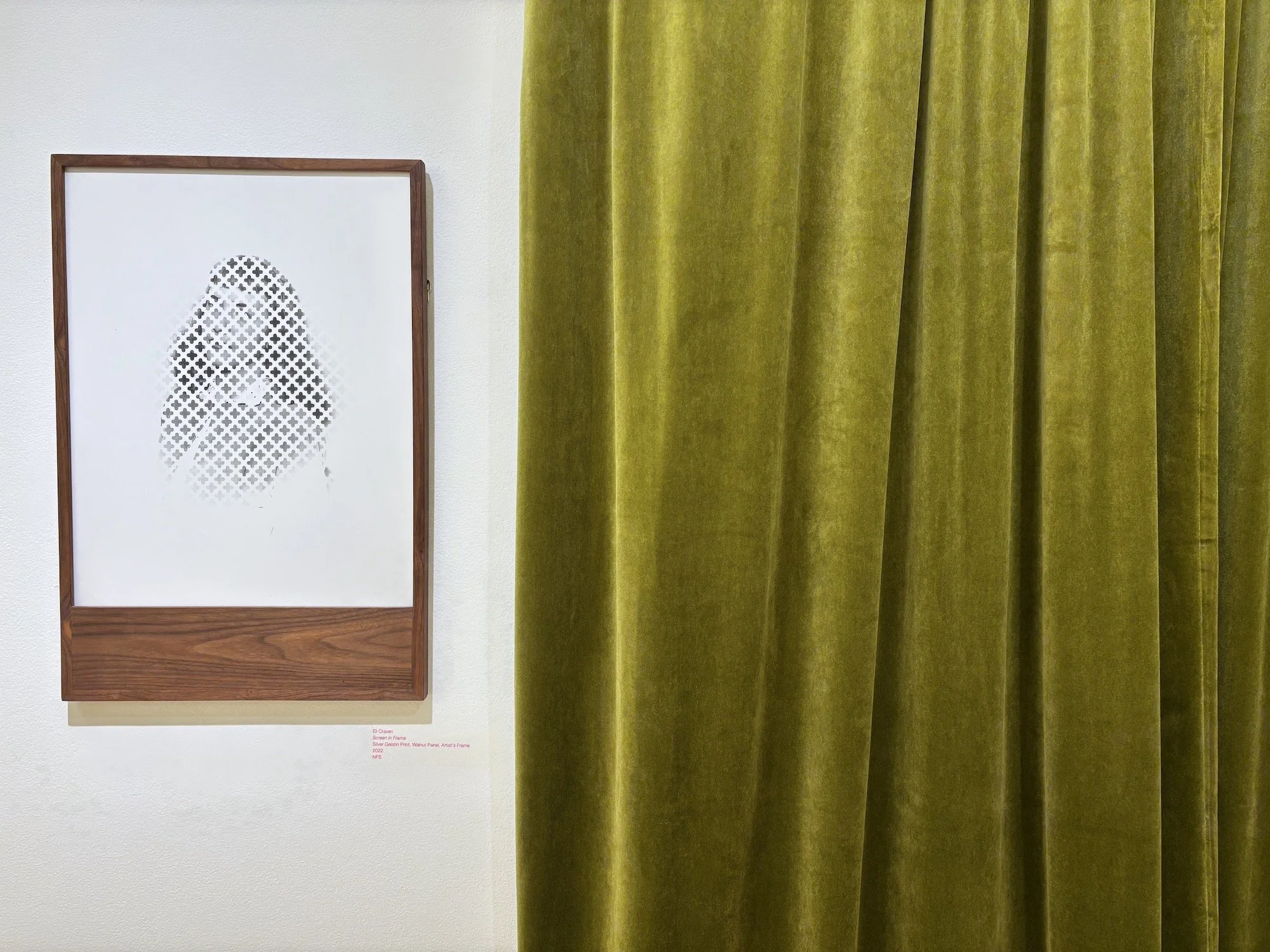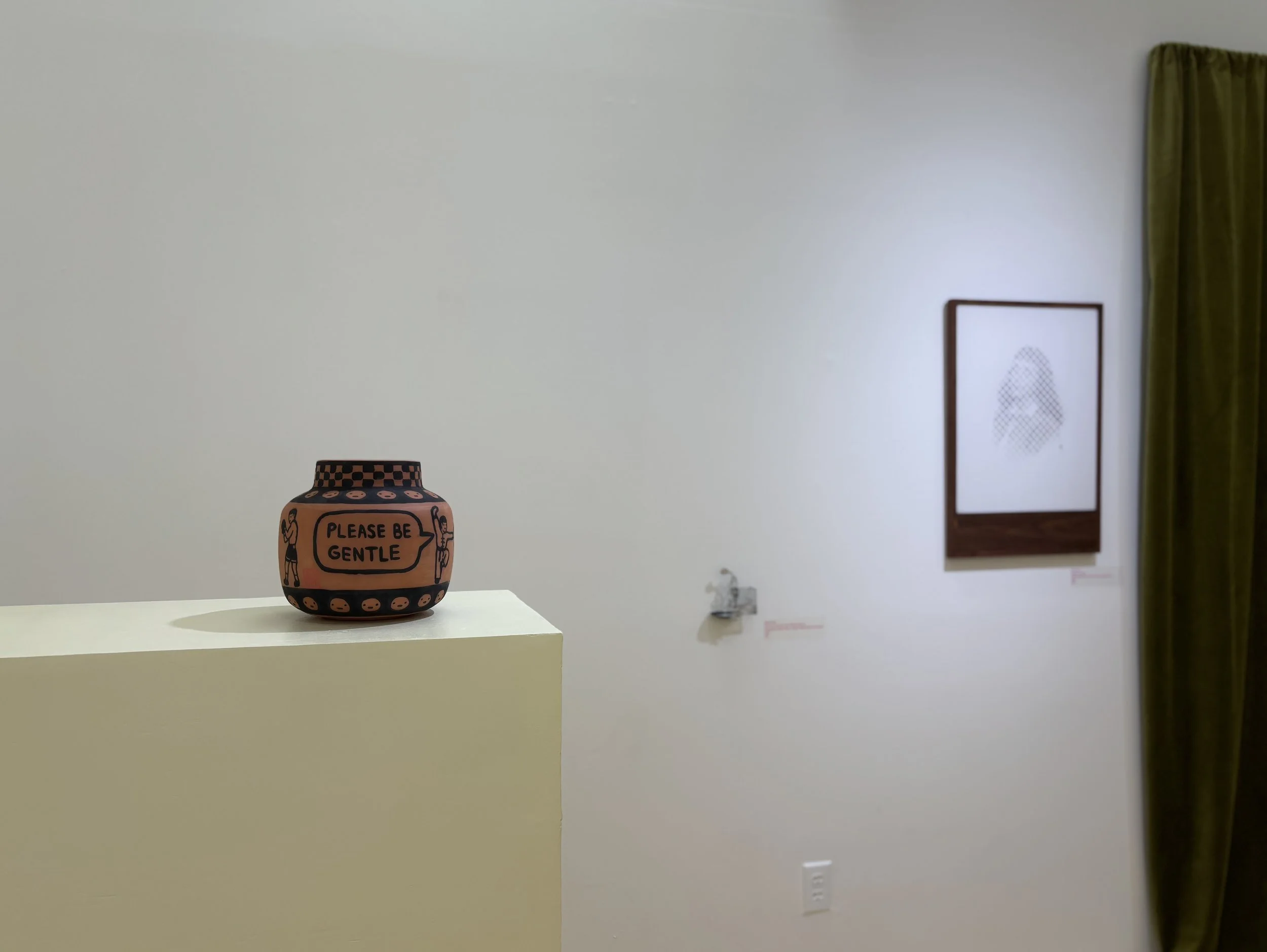Brand me Tender: “One in the Hand, Two in the Fold”
What does it mean to be optimized not just for work, but for living? For perception, desirability, relevance? These are the questions animating One in the Hand, Two in the Fold, a quietly urgent exhibition at OXH Gallery in Tampa, Florida, curated by Erin Titus and Kaylin Price. On view through September 18, the show offers a nuanced interrogation of the self as a site of labor, aspiration, and aesthetic production. Gathering a group of artists whose practices confront the pressures of visibility, brandability, and survival in an algorithmic age, the exhibition explores a culture where identity is no longer a promise, but an expectation and a high-yield commodity.
One in the Hand, Two in the Fold is not the first exhibition to take on selfhood in late capitalism, but it distinguishes itself by where and how it stages that inquiry. In dialogue with recent shows like The Extreme Present presented at the Moore Building in the Miami Design District during Art Week (Gagosian & Jeffrey Deitch, 2019), which addressed fragmented identity and the hyper-visual economy of the contemporary self, and Love Songs: Photography and Intimacy at the International Center of Photography and ICA Boston (2023), which examined how emotional labor and desire are curated and commodified, this exhibition shifts the center of gravity. Rather than engaging with themes at scale in global art capitals like New York, London, Berlin, or Hong Kong, One in the Hand, Two in the Fold roots its inquiry outside the dominant circuits of art-world production. Its power lies in the granular: what does optimization, branding, and self-curation look like in Tampa, Florida, a place where funding, visibility, and identity are negotiated in real time, with real stakes?
The selected works resonate with the legacy of conceptual artists like Andrea Fraser, Martha Rosler, and Mierle Laderman Ukeles, yet they speak directly to our present moment of curated authenticity, emotional visibility, and affective labor. Titus and Price, artists themselves (working in painting and sculpture respectively), rely on a curatorial logic that is aesthetically sensitive and conceptually grounded in critical materialism and feminist precedent; leaning on a carefully chosen group of artists who amplify the discourse beyond major art centers to consider how the performance of identity under intimate, societal and ideological pressure is shaped, resisted, and reimagined at the margins.
Together, the artists in One in the Hand, Two in the Fold form a resonant chorus, revealing how personal style and the labor that underpins it become commodified through relentless cycles of attention, aspiration, and survival. Eli Craven’s conceptual photography dissects the ideological charge of found images, unraveling their embedded narratives of desire, sexuality, and death. George Goldberg’s portraiture captures intimacy and protest with equal force, archiving Black identity and community through striking, grounded compositions. Camilla Byrd’s figurative paintings walk a fine line between innocence and unease, using unflinching gazes to explore the emotional dissonance of coming-of-age. Catalina Cheng builds playful, emotionally resonant objects that blend cartoonish joy with queer resistance, remixing Chinese ceramics and Spanish idioms to narrate a hybrid, diasporic experience. Erin Lingard, a Brooklyn-based jeweler and sculptor, works with scale and materiality to subtly interrogate embodiment and care. Becca Wahl transforms photographs and found objects into poetic glass-framed moments full of grief, memory, and light. Finally, Sydney Hunter Kleinrock blends the intimacy of tattoo culture with the expressiveness of painting, producing raw, intuitive works that echo the performative vulnerabilities of bodily inscription.
One in the Hand, Two in the Fold reveals how deeply market logics have colonized interiority. The show’s title gestures toward the paradox of possession in neoliberal subjectivity: the self always in pursuit of its own branding. Yet the exhibition doesn’t confine its critique to the white cube. Its most ambitious gesture unfolds through a series of Pop-Up Markets, designed by the curators and planned to be staged at gas stations, construction sites, and other non-traditional sites throughout the duration of the exhibition. Upon first glance, it appears as a vendor-style cart hawking small artworks, zines, soaps, and intimate ephemera. But look again, and it reveals itself as a tactical intervention that blurs the lines between commerce, care, and critique, seamlessly merging production with display. While it brings to mind similar interventions such as Simone Leigh’s Free People’s Medical Clinic (2014), Temporary Services’ Free Store, and Emiliano Settecasi’s Department of Contemporary Art, which used market structures to stage artistic critique, Titus and Price push further by integrating sponsorship into the conceptual scaffolding. In most contexts, this might read as a nod to arts funding. But in a show obsessed with the commodification of selfhood, the gesture is too deliberate to be accidental. It becomes, instead, a live test case: can critique coexist with corporate patronage? Far from neutralizing tensions, the Bay to Bay Group’s sponsorship of the Pop-Up Market through OXH Gallery, despite its affiliation with Truist Bank, is not peripheral to the exhibition’s content; it is embedded within it.
This level of meta-awareness would be impressive in any context. But its emergence from OXH Gallery, a relatively new and defiantly independent space in Tampa, makes it all the more significant. Founded with a mission to support women artists whose practices extend into lasting aesthetic and affective engagement, OXH has quickly evolved into a testing ground for cross-disciplinary experimentation, deep engagement with emerging curators (like Titus and Price), and civic-minded art. The gallery is not positioning itself as an alternative space; it’s rethinking what the mainstream could look like if rooted in care, risk, and the fusion of locality and the world at large. In doing so, it joins a growing constellation of exhibitions and spaces across the US, from Recess in Brooklyn to Project Row Houses in Houston, charting ways of making art that resist spectacle in favor of presence.
Just like the gallery, One in the Hand, Two in the Fold doesn’t pretend to be utopian. It is, instead, a document of struggle, as intimate and structurally incisive as it is beautifully rendered. It offers no answers, but it does propose new forms: new places for art to live, new modes of collaboration between commerce and critique, and new templates for what can be accomplished in Tampa through art.
One in the Hand, Two in the Fold is on view at OXH Gallery, Tampa, is on view from July 17th to September 18th, 2025.




